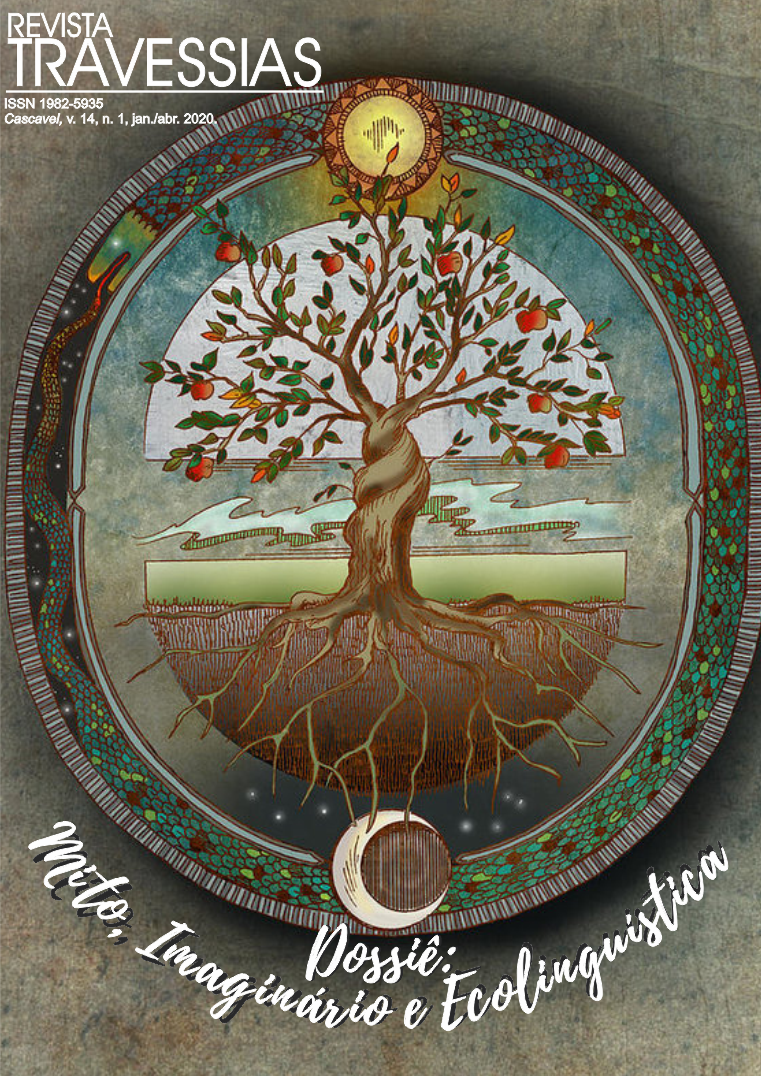Woman and man in the imaginary of The handmaid’s tale
DOI:
https://doi.org/10.48075/rt.v14i1.24177Keywords:
The handmaid’s tale, Durand/ Imaginary, Mythocritcs.Abstract
The handmaid’s tale series presents the woman's condition in a future in which she appears completely subdued; where the issue of gender is clearly shared with the audience. This one study seeks to analyze the representations of women and men in this fictional work, guided by the characters June/Offred and Commander Fred Waterford. The methodology undertaken here is based on the mythocritics proposed by Gilbert Durand and in perspectives from his general theory of the imaginary. For example, the mapping of mythical elements present in the narratives that show the Apollonian and Dionysian myths guiding the imaginary of the series, in the next moment, dwells on the mythical lesson of the last myth concerning the representation of excess on character construction.Downloads
References
A BÍBLIA Sagrada. Traduzida em português por João Ferreira de Almeida. Revista e atualizada no Brasil. 2. ed. Barueri: Sociedade Bíblica do Brasil, 1999.
ANAZ, Sílvio. O arcaico e o contemporâneo em sense8: representações arquetípicas da diversidade. Intexto, Porto Alegre, UFRGS, n. 40, p. 77-95, set./dez. 2017.
BARROS, Ana Taís Martins Portanova. Comunicação e imaginário: algumas contribuições da Escola de Grenoble. In: LEÃO, Lúcia. Processos do imaginário. São Paulo: Képos, 2016.
DURAND, Gilbert. Sobre a exploração do imaginário, seu vocabulário, método e aplicações transdisciplinares. Revista Faculdade de Educação da Universidade de São Paulo. São Paulo, n. 11 (1/2), p. 243-273, 1985.
DURAND, Gilbert. As estruturas antropológicas do imaginário: introdução à arquetipologia geral. São Paulo, Martins Fontes, 2002.
SOARES, Rosana; ANAZ, Silvio. O mesmo e o outro em Blade Runner. Revista Tríade, Sorocaba, v. 5, n. 9, p. 98-111, jun. 2017.
THE handmaid’s tale. Criador: Bruce Miler, a partir do romance homônimo de Margaret Atwood. EUA: Hulu, 2017. Temporada 1, episódios de 1 a 10, streaming.
Downloads
Published
How to Cite
Issue
Section
License
Creative Copyright Notice
Policy for Free Access Journals
Authors who publish in this journal agree to the following terms:
1. Authors keep the copyright and grant the journal the right of first publication, with the work simultaneously licensed under the Creative Commons Attribution License, which allows sharing the trial with acknowledgment of authorship and initial publication in this journal.
2. Authors are authorized to take additional contracts separately, for non-exclusive distribution of the work version, published in this journal (eg publish in institutional repository or as a book chapter), with acknowledgment of authorship and initial publication in this journal.
3. Authors are allowed and encouraged to publish and distribute their work online (eg in institutional repositories or on their personal page) at any point before or during the editorial process, as this can generate productive changes, as well as increase both impact and citation of the published trial (See The Effect of Free Access).
Creative Commons License
This work is licensed under a Creative Commons Attribution–NonCommercial-shareaswell 4.0 International License, which allows you to share, copy, distribute, display, reproduce, completely or part of the work, since there is no commercial purpose, and authors and source are cited.



